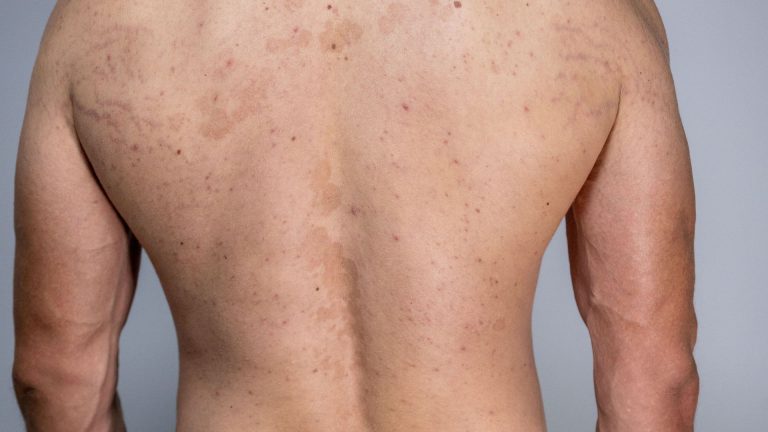Pityriasis Rosea (PR) is a skin condition that sparks curiosity and concern due to its sudden appearance and distinctive rash. Despite its prevalence, many individuals find themselves seeking answers about its causes, symptoms, and treatment options. This comprehensive guide aims to address all your FAQs about Pityriasis Rosea, offering insights into this benign yet perplexing condition.
What is Pityriasis Rosea (PR)?
Pityriasis Rosea is a common, benign skin disorder marked by the emergence of a large, herald patch, typically on the trunk, followed by a widespread rash of smaller, scaly patches. These patches often spread across the trunk, arms, and legs in a pattern that somewhat resembles a Christmas tree. PR generally resolves spontaneously within several weeks to a few months without medical intervention.
What Causes Pityriasis Rosea?
The exact cause of PR remains elusive, but it’s widely believed to be associated with viral infections, notably human herpesvirus 6 (HHV-6) and human herpesvirus 7 (HHV-7). Factors like stress, hormonal fluctuations, and certain environmental triggers might also predispose individuals to this condition.
Symptoms of Pityriasis Rosea
The onset of PR is typically heralded by a single, pink or red patch known as the “herald patch.” Subsequently, smaller, scaly patches emerge, spreading in a symmetrical pattern. The rash can be mildly itchy for some. A minority of individuals may also experience mild, flu-like symptoms before or during the rash’s appearance, including fatigue, headache, and sore throat.
Who is at Risk for Pityriasis Rosea?
PR predominantly affects adolescents and young adults aged between 10 and 35 years, though it can occur at any age. The condition has a slight female predilection and tends to be more common during spring and fall, suggesting a seasonal pattern to its occurrence.
Diagnosing Pityriasis Rosea
Diagnosis primarily hinges on the characteristic rash, especially the presence of the herald patch, followed by the symmetrical spread of smaller patches. Dermatologists can often diagnose PR based on a physical examination alone, though a skin biopsy might be necessary in atypical cases to exclude other conditions.
Is Pityriasis Rosea Contagious?
No, PR is not contagious. Despite its association with viral infections, the condition does not spread through person-to-person contact or airborne transmission.
Treatment for Pityriasis Rosea
Given its self-limiting nature, PR often requires no medical treatment. Symptomatic relief for itching and discomfort can be achieved with over-the-counter antihistamines or topical corticosteroids. Moisturizing the skin with gentle emollients can also soothe the dry, scaly patches.
Can Pityriasis Rosea Recur?
While most individuals do not experience PR more than once, there have been rare instances of recurrence. Once the rash resolves, immunity to the triggering viruses usually prevents future episodes. However, a small number of people may see PR return, sometimes months or years later.
When to See a Doctor
Consultation with a dermatologist is advisable if you suspect PR, particularly if you experience severe itching, discomfort lasting several weeks, or if flu-like symptoms accompany the rash. While PR usually resolves without treatment, a healthcare provider can offer guidance and symptomatic relief to ease the condition’s impact.
Conclusion
Pityriasis Rosea is a benign, self-limiting skin condition characterized by a unique rash that resolves on its own over time. While the cause of PR may be linked to viral infections, the condition is not contagious and typically affects adolescents and young adults. Understanding the nature of PR, its symptoms, and the course of the condition can help individuals manage the temporary discomfort it may cause, knowing that it will soon pass without lasting effects.



